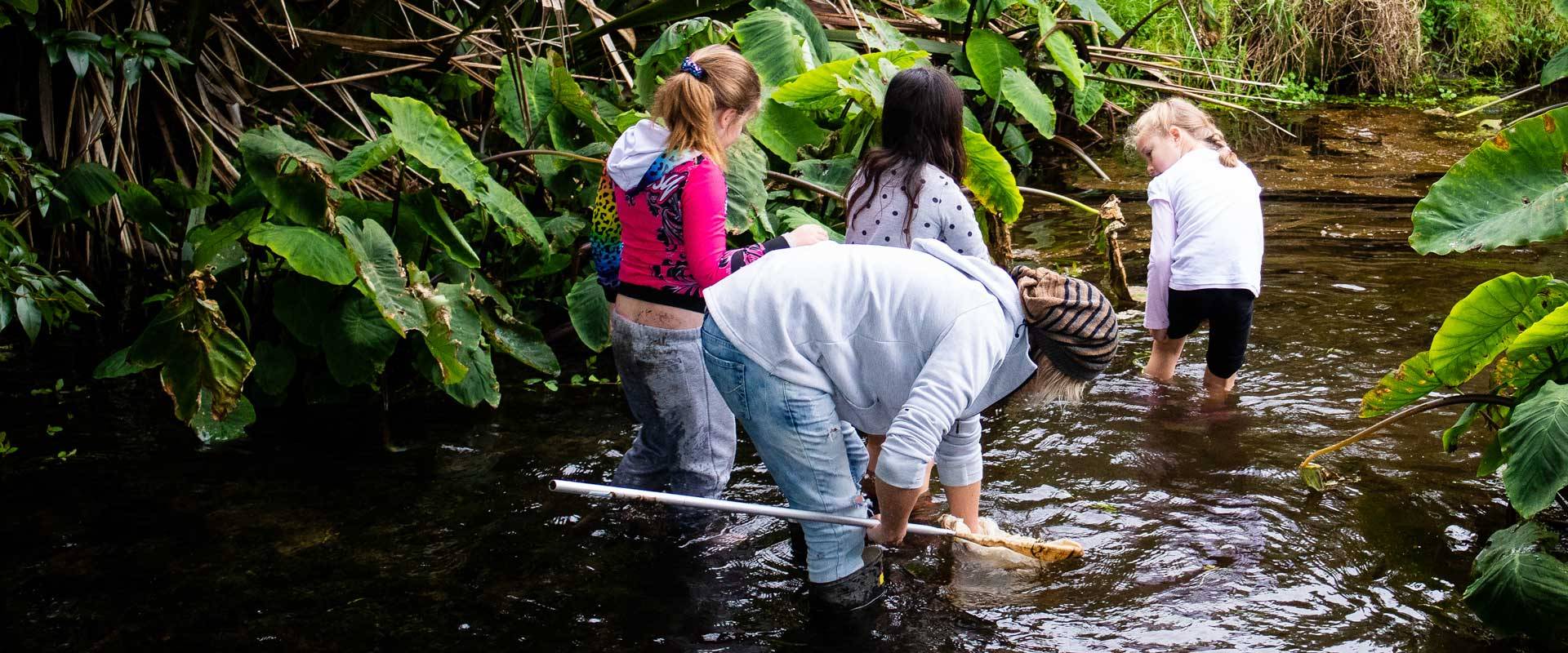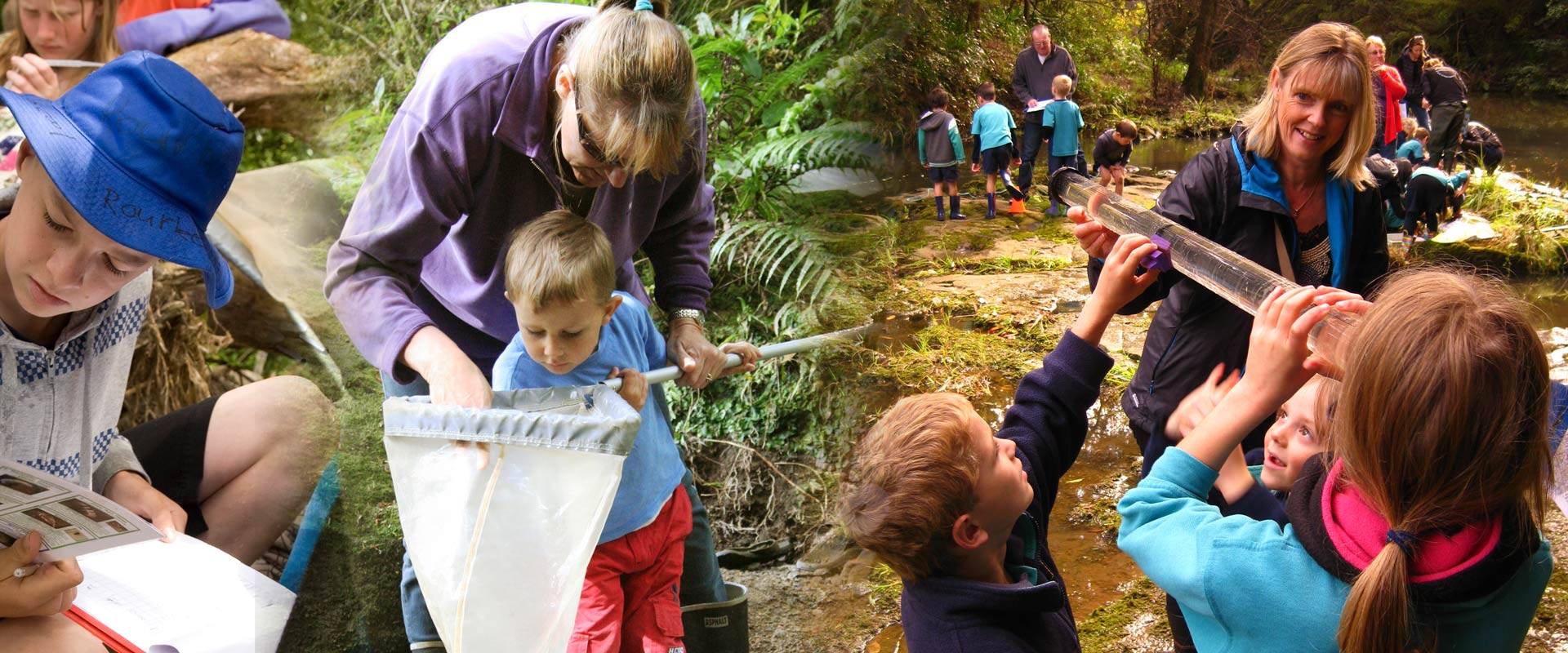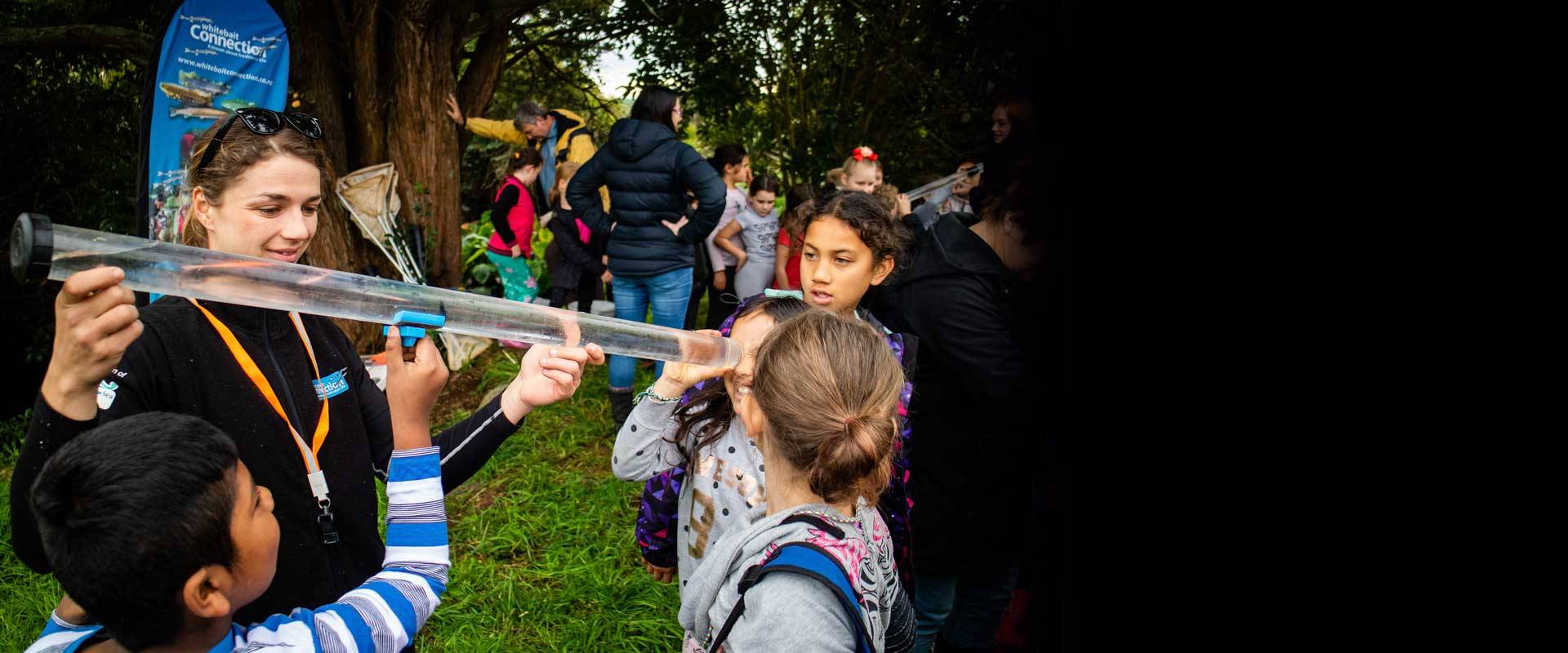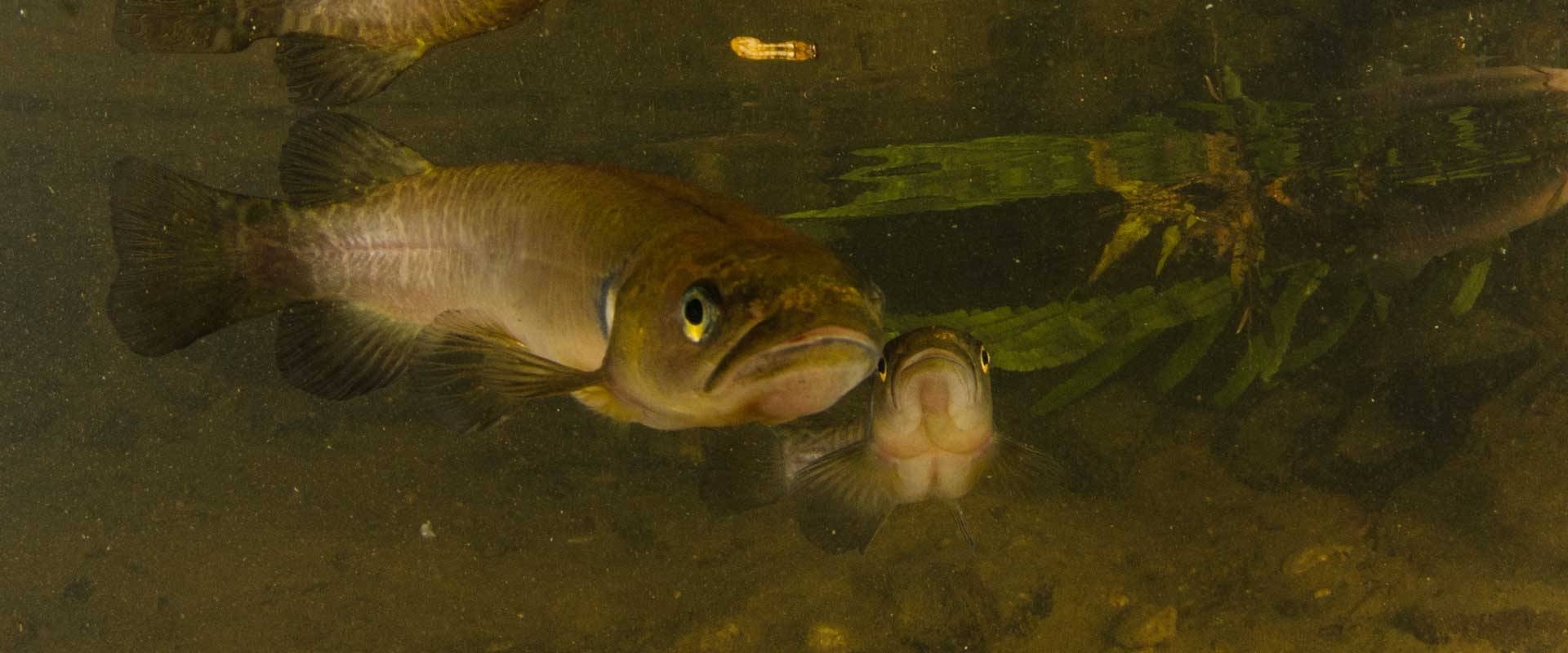In 2021 Whitebait Connection Programme Coordinator Rosie worked with Karetu School for programme delivery. Their programme included a trip to the Taumarere River for a field investigation. The Taumarere River connects with Karetu River and together they flow out into Waikare Inlet, at the bottom of the catchment. The river starts in Russell Forest, at the top of the catchment. The catchment is mainly farmland and native bush.
Here are the results of the students testing at the Taumarere River:
- Habitat Assessment - The students noticed that there was no shade over parts of the waterway, but that there was good water flow. The instream habitat had riffles and deep pools, where different types of water bugs and fish could live
- Electrical conductivity - 90 µS/cm
- Temperature - 17.7 degrees celsius
- pH - 7
- Macroinvertebrates - damselfly nymphs, flat mayfly nymphs, woody cased caddisflies, free living caddisflies, back swimmers, water boatmen, freshwater shrimp, snails and a water strider
- Fish - fish caught included common bullies and shortfin tuna
Students sampling for macroinvertebrates in the Taumarere River








